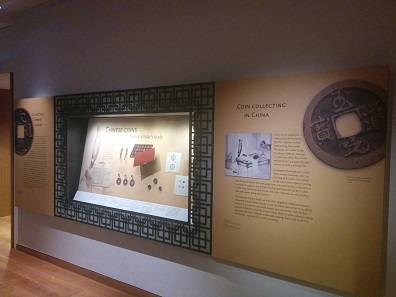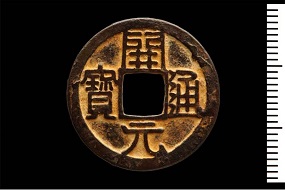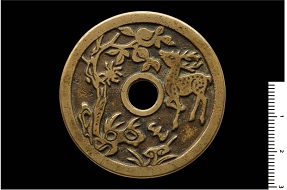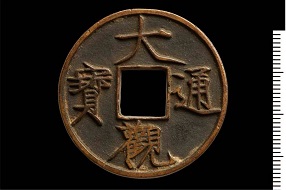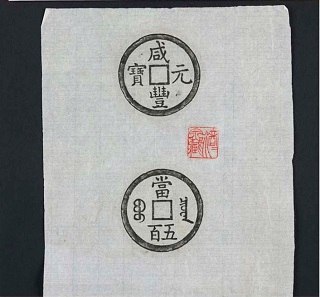June 15, 2017 – “Chinese coins from the scholar’s study” is a new exhibition at the Money Gallery in the Ashmolean Museum. This special display presents Chinese antiquarian taste for coin collecting and is open until September 24th, 2017.
A view on the display.
Coin collecting developed in China during the Song dynasty (AD 960-1279). This passion originated in the imperial court’s enthusiasm for the past and antiquities.
Kaiyuan tongbao.
Coins are scholarly antiques par excellence: their appreciation requires a certain cultural background, because they are above all historical objects.
A Chinese amulet.
Coins are also appreciated and collected as aesthetic objects.
Zhi Dao yuan bao in Cursive, Regular, and Running script.
Their inscriptions are testimonies of the evolution of the different Chinese calligraphic styles. While the oldest coins bear ancient characters traced in seal script, later coins feature inscriptions in regular, current or running script.
Emperor Huizong’s slender gold calligraphy.
Sometimes the emperor himself would trace the inscription of his coinage. As a medium for calligraphy, coins can be considered art objects.
A coin rubbing.
The beauty of the inscription can therefore be a guide to the collection rather than the desire to illustrate exhaustively Chinese history.
For more information on the display go to the Ashmolean website.




